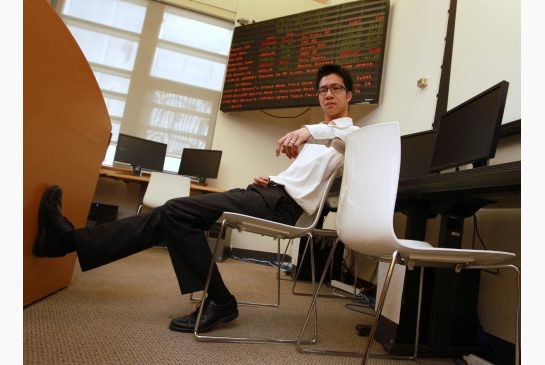Regulators blame computer algorithm for stock market flash crash
Post on: 29 Июнь, 2015 No Comment

Joint SEC-CFTC investigation expected to lead to the rollout of new rules designed to prevent similar crashes
Computerworld | Oct 1, 2010 4:33 PM PT
The U.S. Securities and Exchange Commission (SEC) and the Commodity Futures Trading Commission (CFTC) Friday released a joint report blaming an automated trade execution system the May 6 stock market flash crash that effected trading worldwide.
According to the two agencies, an automated trade execution system flooded the Chicago Mercantile Exchange’s Globex electronic trading platform with a large sell order that caused the Dow Jones Industrial Average to plunge by almost 1,000 points in a half hour, wreaking havoc on an already stressed market.
Twelve days after the crash, the SEC and CFTC jointly released a preliminary report on the events of that day. Today’s report confirms much of what was found in the preliminary investigation.
According to the 87-page report released today, May 6 had been an unusually turbulent day for the markets. At 2:32 p.m. against this backdrop of unusually high volatility and thinning liquidity, a large fundamental trader initiated a sell order for 75,000 shares of stock worth about $4.1 billion. The trader’s automated execution system sold 35,000 of those shares in just seven minutes.
The Commissions would not name the trading firm, but Waddell & Reed has been implicated in multiple media reports as the source of the trade that set off the flash crash.
This large fundamental trader chose to execute this sell program via an automated execution algorithm that was programmed to feed orders into the June 2010 E-Mini market to target an execution rate set to 9% of the trading volume calculated over the previous minute, but without regard to price or time, the Commissions’ report stated. The execution of this sell program resulted in the largest net change in daily position of any trader in the E-Mini since the beginning of the year.
The E-Mini S&P 500 is an index of futures traded on the Chicago Mercantile Exchange.
Shortly after the crash, the U.S. House Financial Services Committee held a hearing to examine the issues surrounding the stock market plunge. Although the committee found no single reason for the steep drop, it suspected it was triggered by an order entry mistake and exacerbated by automated trading systems that process trades in milliseconds.
In addition, regulators quickly enacted new rules to curb the problems that apparently had caused the May 6 flash crash. The rules, currently under a six-month test period, trigger a pause in trading for individual stocks if the price moves up or down by 10% or more in a five-minute period.
The report said the Commissions’ study determined that under stressed market conditions, the automated execution of a large sell order can trigger extreme price movements, especially if the automated execution algorithm does not take price into account.
Moreover, the interaction between automated execution programs and algorithmic trading strategies can quickly erode liquidity and result in disorderly markets. As the events of May 6 demonstrate, especially in times of significant volatility, high trading volume is not necessarily a reliable indicator of market liquidity, the report stated. May 6 was also an important reminder of the inter-connectedness of our derivatives and securities markets, particularly with respect to index products.

The SEC is expected to base a number of additional new market rules, such as a procedure that prevent trading anomalies by setting specific parameters for trades, on the results of the joint report.
The SEC is also likely to propose the elimination of stub quotes, which allow market participants to drop out of a bidding process by offering low bids on high stock offers. The problem is exacerbated by automated trading platforms.
In addition, the SEC will looking at trading practices in market centers to identify any potentially abusive or manipulative conduct that may cause system delays that inhibit the ability of market participants to engage in a fair and orderly process of price discovery.
In a joint statement, SEC Chairman Mary L. Schapiro and CFTC Chairman Gary Gensler said, We now must consider what other investor-focused measures are needed to ensure that our markets are fair, efficient and resilient, now and for years to come.
Lucas Mearian covers storage, disaster recovery and business continuity, financial services infrastructure and health care IT for Computerworld. Follow Lucas on Twitter at @lucasmearian. or subscribe to Lucas’s RSS feed. His e-mail address is lmearian@computerworld.com .
Lucas Mearian General assignment and storage
Lucas Mearian covers consumer data storage, consumerization of IT, mobile device management, renewable energy, telematics/car tech and entertainment tech for Computerworld.














